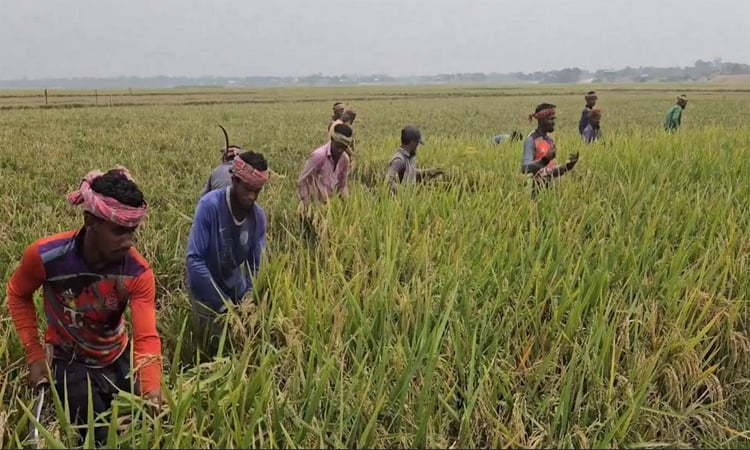News Flash
News Flash

By SK Russell
KISHOREGANJ, April 30, 2025 (BSS) - Deadly lightning appears to be very creepy for Kishoreganj hoar people as they see deaths and injuries by the strike of its flash while working and harvesting on the paddy fields.
With the arrival of Baishakh, the lush haor regions of Kishoreganj have come alive with the sound of sickles for harvesting Boro paddy as farmers and laborers are at work from dawn to dusk.
But, a deadly threat emerged during this harvesting season as the daily storms accompanied by lightning strikes have turned the harvest of haor people into a life-or-death endeavor. Each year, lives are lost by these sudden strikes, and 2025 is posing as no different. The fear of death is there when workers are on the fields under ominous skies.
Local farmers are now making plea to the government for urgent action, demanding the installation of "lightning elimination rod" on urgent basis to protect vulnerable agricultural workers and their families during this disaster prone season.
According to reports from multiple sources, five people - including three farmers and an agricultural worker - died in lightning strikes in Kishoreganj district on April 28. Three of the victims were killed in the haor areas of Ashtagram and Mithamoin upazilas.
On Monday last, a farmer named Phulesa Begum (65) was killed by a lightning strike while drying straw in Shantiganj haor in Mithamoin upazila of the district.
Besides, two farmers -Indrajit Das (36) and Swadhin Mia (14)- were killed while harvesting paddy in Halalpur haor and Kalma haor in Ashtagram upazila.
Abdul Karim (37) was killed in a lightning strike while harvesting paddy in Daulatpur haor in Hilchia union of Bajitpur upazila.
Moreover, a fisherman named Md. Shahjahan (42) died in a lightning strike while fishing in Chatol Beel of Mumurdia Union of Katiadi Upazila.
Mukul Mia, a farmer of Itna Haor, said, "I start working in the haor since early morning. But now I feel very scared to work there, I just look at the sky. When lightning starts, there is no place to take shelter nearby."
Advocate Sheikh Mohammad Rokon Reza, a prominent lawyer and resident of Itna Haor, said, "The farmers and workers of the haor work from morning to evening, harvesting, carrying and piling paddy under the open sky. During this time, they have to worry about where to take shelter when storms, rains and lightning start."
"In most cases, they lack access to safe shelter. As a result, they continue working in open fields during lightning strikes, putting their lives at serious risk. To protect them from this danger, it is crucial to install lightning rods in vulnerable areas," he added.
Abdur Razzak, an agricultural worker in Ashtagram Haor, said, "Even when there's a risk of lightning, we have no choice but to work in the haor. If we stop working, we don't earn - and without money, we can't afford to eat. We depend on luck to survive because we are poor."
According to meteorologists, the haor region - being open and swampy - is highly prone to lightning strikes. The lack of tall vegetation and the flat landscape make people working in these areas more vulnerable, often becoming the primary targets of lightning.
Experts emphasized that beyond raising public awareness, preventive measures must have to be taken including construction of safe shelters and the implementation of technology-based early warning systems.
Key measures include delivering lightning forecasts via mobile phones, building protective sheds for field workers, and providing training on lightning safety, are needed to protect haor people, they said.
Md. Badruddoza, Relief and Rehabilitation Officer of Kishoreganj District, said, "If someone dies in a lightning strike, a grant of Taka 25,000 is provided for burial and funeral expenses.
He, however, said that at present, they do not have any ongoing projects aimed at preventing lightning-related incidents.